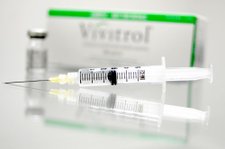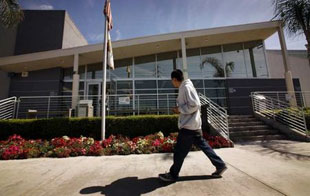Weighing the costs of recovery [updated]
December 7, 2011
During the past 18 months, Los Angeles County public health officials have quietly opened a new—and controversial—front in their battle against the painful and costly cycle of addiction, treatment and relapse.
Under a little known pilot project, some 600 uninsured individuals have received roughly 1,500 injections of the drug Vivitrol, which has shown promising results in reducing cravings while allowing the benefits of traditional recovery to take a stronger hold. The publicly-funded project is said to be the largest of its kind in the nation.
Now the Department of Public Health hopes the Board of Supervisors will, in the coming days, approve a request for $3.4 million to expand the delivery of Vivitrol in an even broader effort to determine whether the $847-per-dose injections improve the odds of long-term sobriety—and can do so at a lower overall cost to the public. [See update below.]
“This breaks new ground for the county,” says John Viernes, director of the Department of Public Health’s Substance Abuse Prevention and Control Division. “Many clients, even on a court order, will leave residential treatment after only a few days because the urge to use is so great. If we can get people into recovery faster and decrease relapses, we can serve more people. The whole cycle changes, both in terms of productivity and quality of life.”
The stakes are high: In Los Angeles County, the economic costs of alcohol-related illnesses, injuries, traffic accidents and crime approach $11 billion annually. The Department of Public Health alone spends more than $200 million on substance abuse and prevention programs each year.
Although the drug’s price also is high, Viernes insists it can be lowered through bulk purchase. “The initial cost is high for any new strategy,” he says.
Vivitrol, an extended-release formulation of the anti-addiction drug naltrexone, was approved for the treatment of alcohol dependency in 2006 by the federal Food and Drug Administration. Injected monthly, Vivitrol has been used for several years in private rehabilitation clinics. Last year, it also was approved to assist opiate users in relapse prevention.
Clinicians say the drug helps clients—particularly those with a family history of alcoholism—stay sober long enough to focus on a course of therapy or 12-step program, which is key because studies have shown that long-term recovery rates improve the longer an alcoholic or drug addict remains in treatment.
It’s not a magic bullet,” says Ken Bachrach, Ph.D., psychologist and clinical director at Tarzana Treatment Centers, one of the providers that has participated in the county pilot program. “I view it more as value-added. But if we can get [clients] past six months, they have a much better chance of staying clean.”
Aside from complaints about its administration (a hip injection), the shot’s most common side effects are occasional nausea, headaches or fatigue. Numerous studies have found that recovering alcoholics who combine Vivitrol with counseling tend to stay sober longer, drink less if they relapse and return more quickly to treatment.
Studies done by two insurance providers—Horizon Blue Cross Blue Shield of New Jersey and Aetna Behavioral Health Care—also showed that the drug dramatically reduced the hospitalization, pharmacy and medical costs of treating the alcohol-dependent.
The Horizon study, which examined the medical bills of recovering alcoholics for 30 months after Vivitrol injections, found that alcohol-related hospital costs fell 52 percent, total medical costs fell 34 percent and combined medical and pharmacy costs fell 49 percent. Among those requiring the most care prior to their treatment, Vivitrol injections cut medical costs by some $70,000 per patient a year.
But the drug has been slow to catch on, partly because of the cost of the injections and partly because clinicians and alcohol counselors traditionally have been more accustomed to treating substance dependencies with behavior modification therapy and oral drugs, if they use any medication at all. Also, many substance abuse programs lack the necessary staffing and clinical licenses to administer injections, so the patient often has to go to a doctor’s office each month to get the shot.

Tarzana Treatment Center is among the rehab facilities where the county is testing Vivitrol. Photo/Los Angeles Times
Under the county’s pilot project, the drug has been administered during the past 18 months to uninsured clients in various county-funded recovery programs, ranging from people in court-ordered treatment to homeless indigents, says Viernes.
Those county clients have each received between one and four shots since March 2010 as part of their treatment, Viernes says. So far, he says, both inpatient and outpatient clients who’ve been given at least one dose of the drug have been up to twice as likely to complete treatment as those who have not received injections.
One client, a 45-year-old woman who had endured “over 20 detoxes”, reported that, thanks to Vivitrol, her cravings for alcohol had stopped for the first time since her adolescence. A 52-year-old man, who’d been in and out of 12-step programs since his twenties, reported that after two shots, he could focus on his recovery for the first time—and pass a liquor store without realizing it.
Still, despite such testimonials, UCLA researchers have not been tracking clients long enough to determine the medication’s possible benefits for long-term sobriety. Nor is it clear how long an alcoholic or addict might need the injections. The drug’s manufacturer, Alkermes, recommends 6 months to a year of treatment, although county has tried to maintain a 3-shot limit in its pilot program.
Viernes says most of the county clients required only one or two shots to help them focus better on the other aspects of their treatment. But each case is different. At least one participant cited in a preliminary evaluation of the pilot—a 36-year-old blackout drinker and methamphetamine user with a 20-year habit—was on his fourth injection, possibly because of his dual addiction.
“When they’re done with the Vivitrol, what happens? In the next phase, we’re hoping to find that out,” explains Desiree Crevecoeur-MacPhail of the UCLA Integrated Substance Abuse Programs, which is conducting the evaluation.
“Medically assisted” treatments like the county’s pilot project are part of a relatively recent trend in substance abuse research. While many addicts swear by counseling and 12-step programs, few manage to avoid relapses along the way, and even the best-regarded recovery programs are not immune to this reality.
At the same time, however, counselors familiar with the so-called “psycho-social model” of treatment have been slow to incorporate pharmacology into their 12-step and behavioral therapy programs, either because of a reluctance to treat addicts with more drugs or because of the psychological underpinnings of addiction.
In fact, an earlier attempt to incorporate Vivitrol into county treatment programs three years ago fizzled in part because counselors were skeptical, Viernes says.
“There was an aversion to using medication as a means of recovery,” he says, adding that this attitude has softened as medically assisted treatment has become more common.
“Now that we’ve seen its efficacy,” Viernes says, “we’ve reached a tipping point where the clients are coming to us for the injections.” He says demand has risen so quickly that the county’s supply of the drug is nearly gone.
Public health officials say the Vivitrol project took shape after the drug’s manufacturer offered some free samples to Tarzana Treatment Centers, one of the county’s contracting agencies, in 2008.
At the time, Vivitrol had been on the market for only two years, but substance abuse workers were familiar with the generic form of naltrexone, which has been available in pill form since the mid-1990s. The pills had received mixed reviews because, while they cut cravings, they had to be taken daily and patients who skipped pills often relapsed.
The injections were designed to sidestep that problem by ensuring that a single dose would, at the very least, help the patient go 30 days without cravings.
“Alkermes donated 100 vials to Los Angeles County, and we did a small trial with about 32 patients,” says Jim Sorg, director of admissions at Tarzana Treatment Centers. Over six months, the Centers would later report, 23 moved on to residential treatment and only four quit against medical advice.
From there, Viernes says, the study gradually grew to include more than a dozen treatment providers, who refer clients to larger centers, such as Tarzana, for injections.
Expansion of the pilot, he says, will give the county three more years to find out whether medically assisted treatment will slow the revolving door of substance abuse treatment—and to decide whether it improves enough lives and cuts enough from the long-term costs of alcoholism to justify the public expense.
In the meantime, providers are hopeful.
“It’s not a guarantee,” says Bachrach of Tarzana Treatment Centers. “It’s more as if a doctor said, ‘I have something that’s not going to cure you, but will increase your chances of recovery.’ If we can give some extra help to people with addiction, why shouldn’t we?”
Posted 12/7/11
Updated 12/13/11: The Board of Supervisors agreed on Tuesday to broaden the use of the drug Vivitrol in county substance abuse treatment, but also asked the public health department to report back on both the long-term efficacy of the medication and how to lower its cost to the county.
Acting on Supervisor Yaroslavsky’s motion, the board agreed to three more years of funding at a little more than a million dollars annually for the innovative-but-expensive injections, which reduce cravings so that people addicted to alcohol and opiates can better focus on treatment.
“Simply put, this medication helps people stay in treatment longer, which is critical because studies have shown that long-term recovery rates improve the longer an alcoholic or drug user remains in treatment,” Yaroslavsky said.
But Yaroslavsky also wanted better information on the so-called “medication-assisted therapy” and on ways to reduce the $837-per-dose the county must pay for the drug.
The department was asked to report back in three months on bulk pricing and how to improve the likelihood of Medi-Cal reimbursement, as well as how to potentially incorporate Vivitrol into DUI programs.
A follow-up report in a year was also requested to look at medium- and long-term patient outcomes and to examine ways in which the shots—if they turn out to be worthwhile—might be expanded to high-risk populations, such as clients in drug court, probation programs and jail.













 405 bridge work causes a stink
405 bridge work causes a stink





